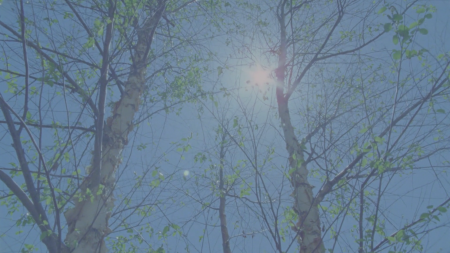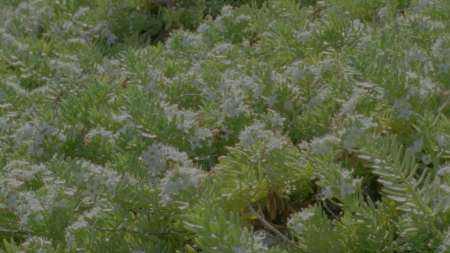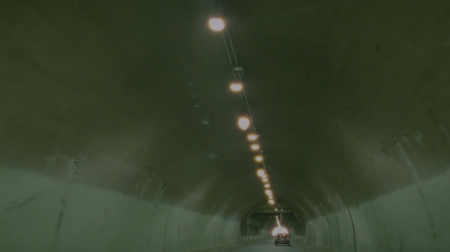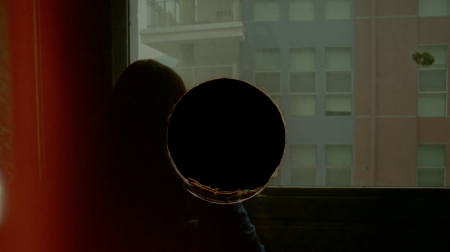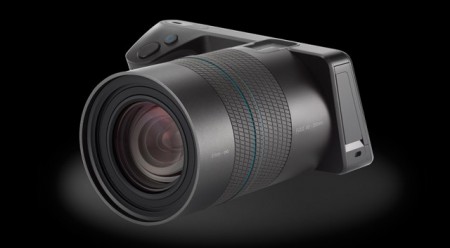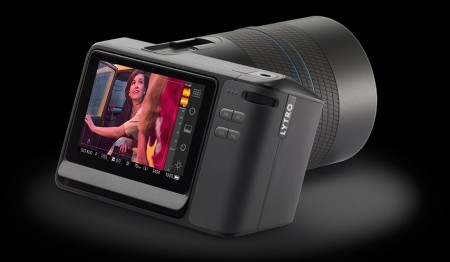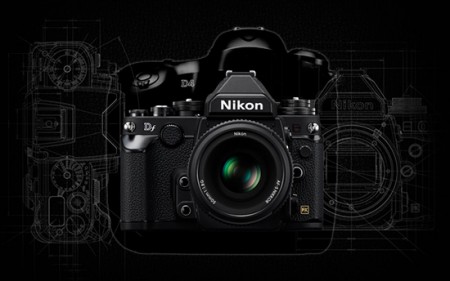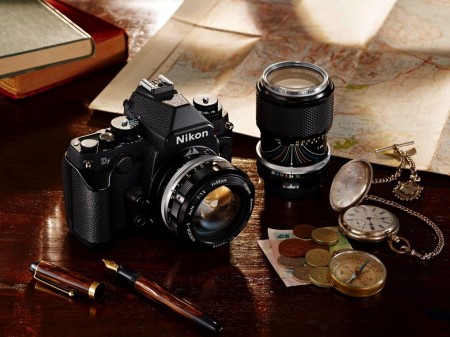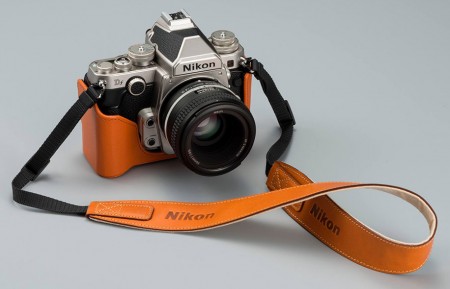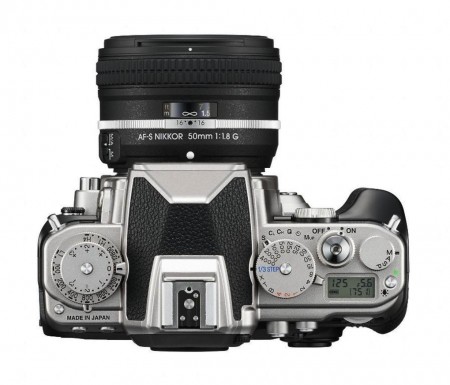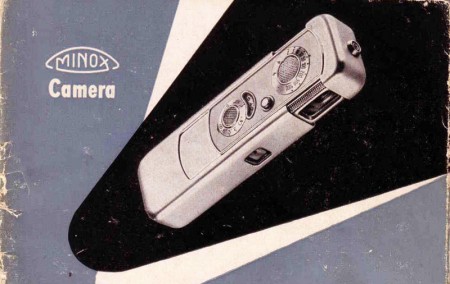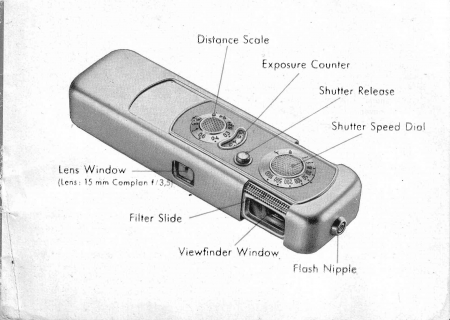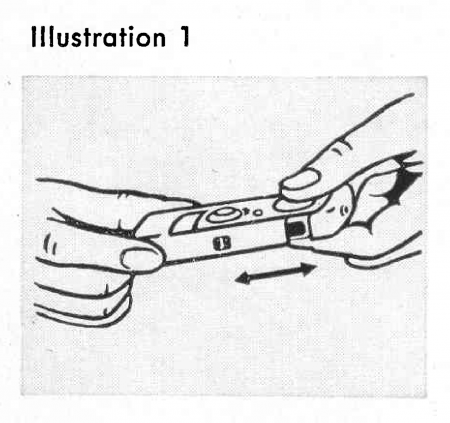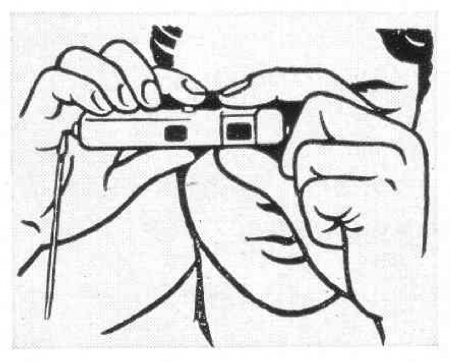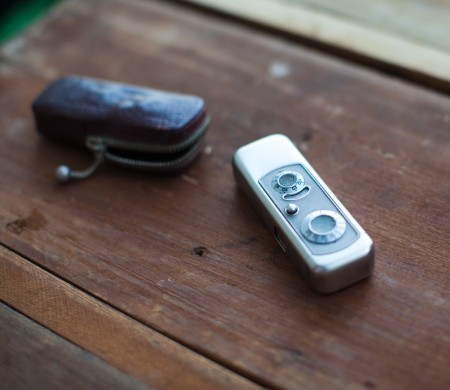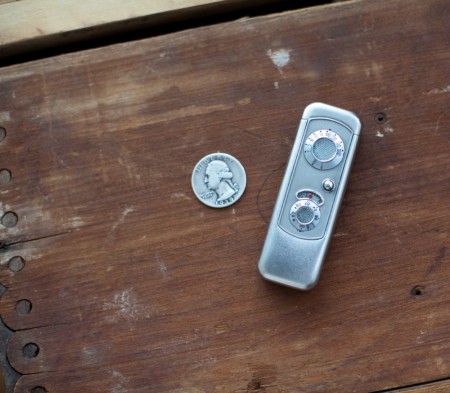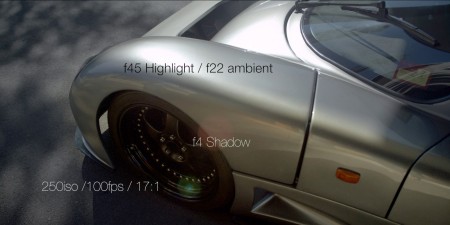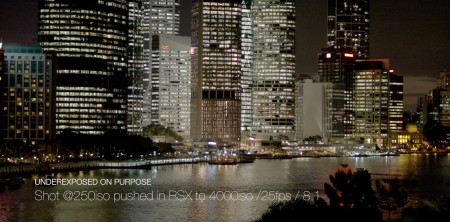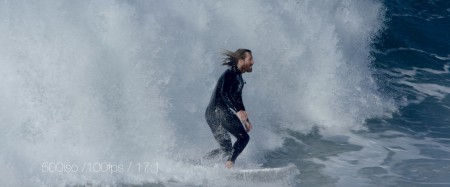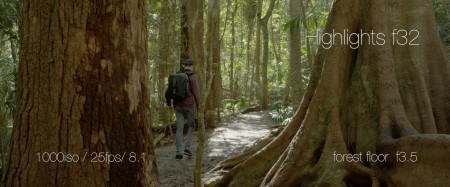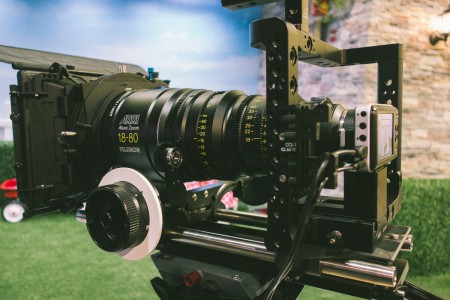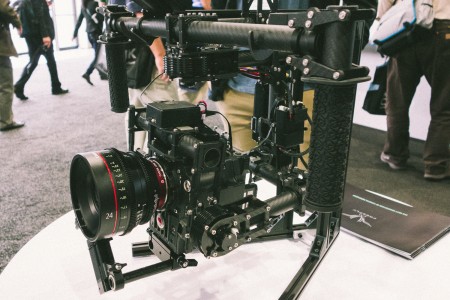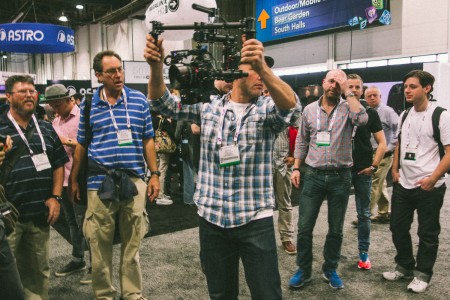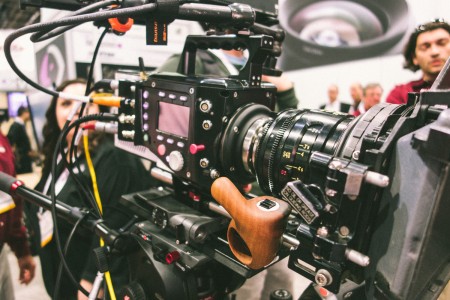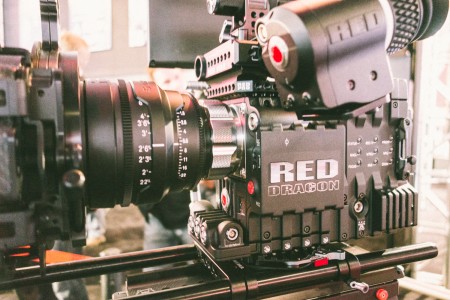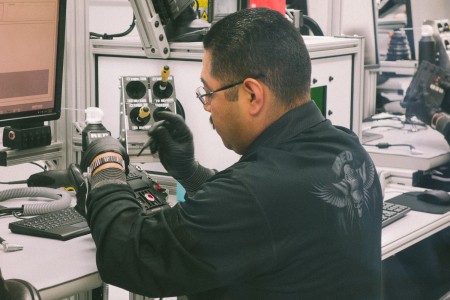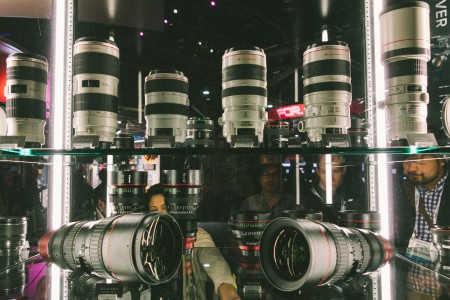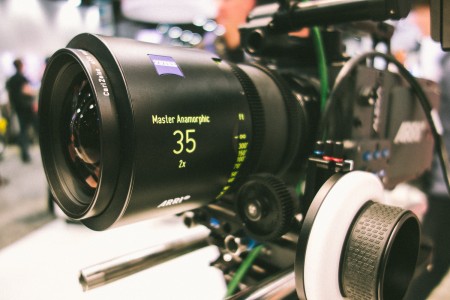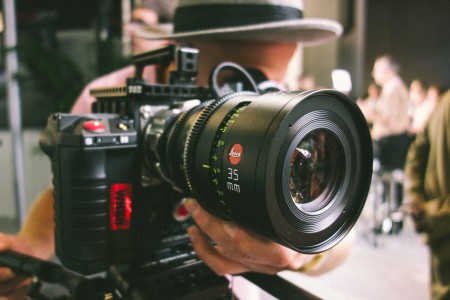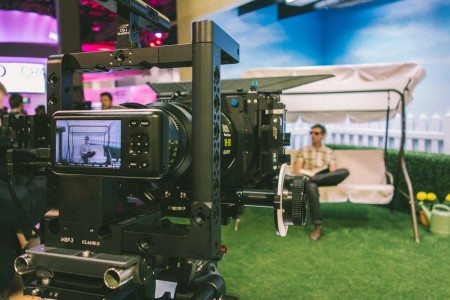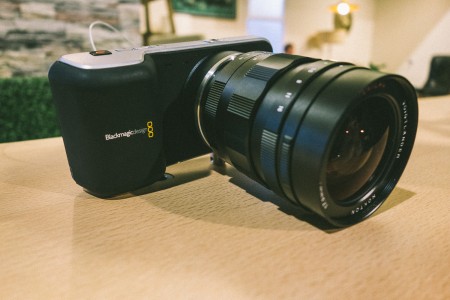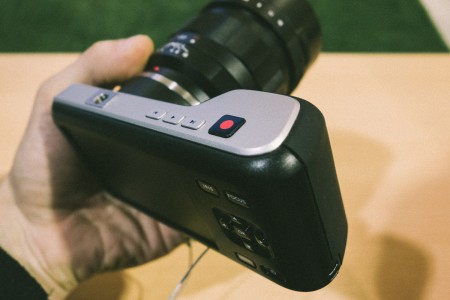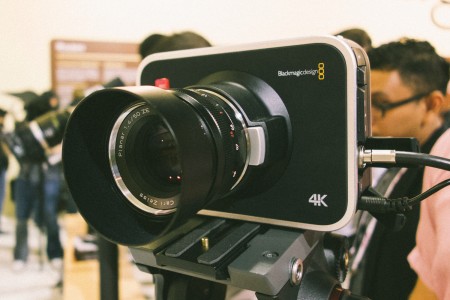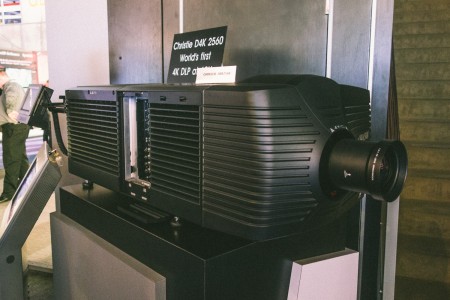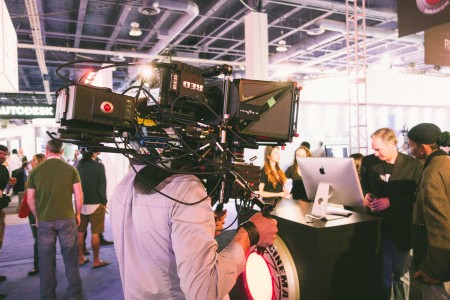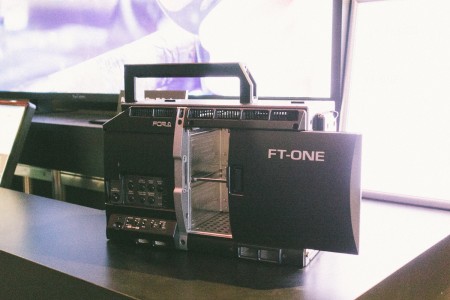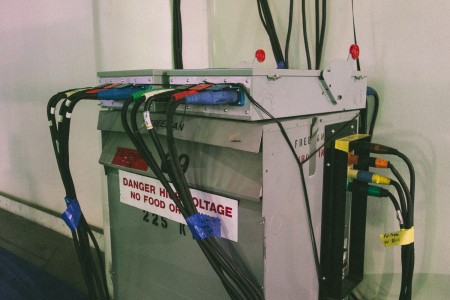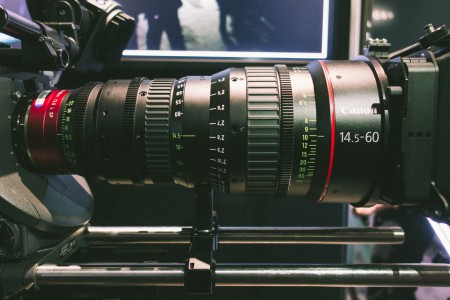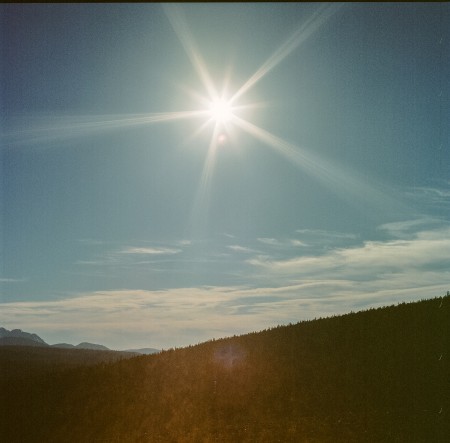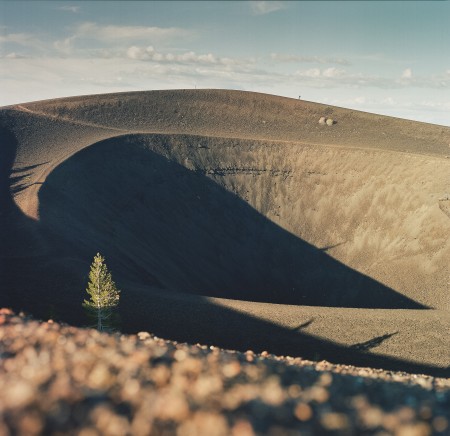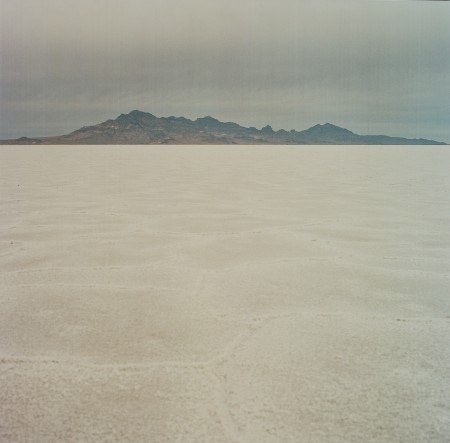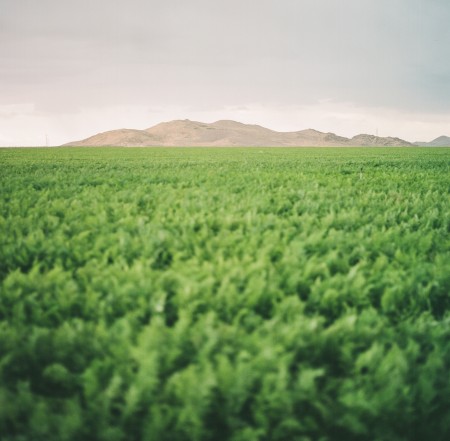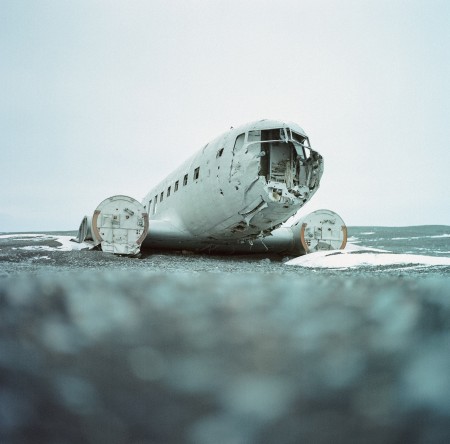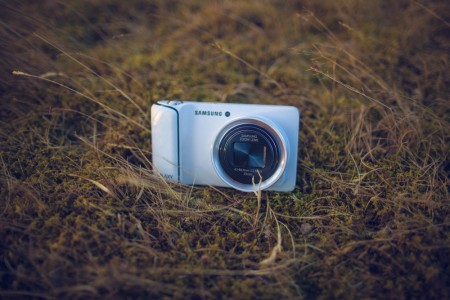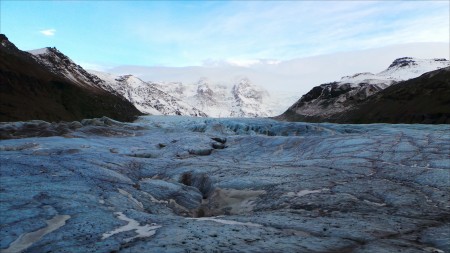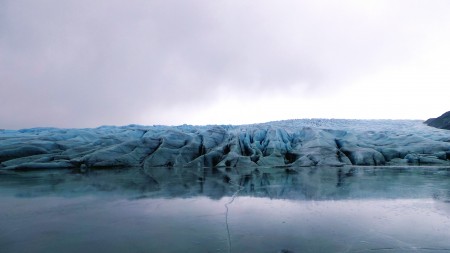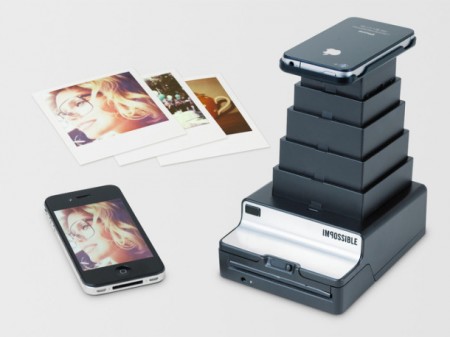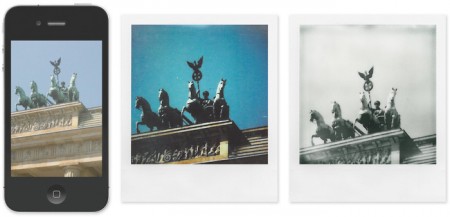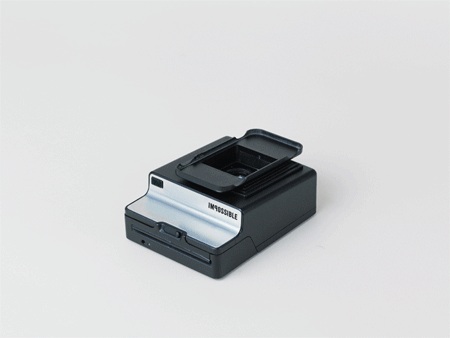I’ve been following Hunter Hampton on Vimeo for quite a while and he’s got really great work. Thought this was fitting for a mid-summer afternoon post. Shot on super 16mm, kick back, fullscreen and enjoy.
Posts in Cameras
Hunter Hampton Cutting Room Floor
Lytro Illum Light Field Camera
You may remember seeing the first Lytro light field camera here on the blog back in 2011. If its unconventional box-like shape wasn’t enough to catch your eye, the astounding technology that enabled photographers to adjust the focal point of the image after it had already been captured surely would have. Check out an example below, you can click to change the focal point and scroll to zoom in and out. There are more samples on Lytro’s Gallery page.
Well, now Lytro is back with the next evolution of the light field camera: the Lytro Illum. Physically, it appears much more in-line with traditional point-and-shoot cameras than its radical predecessor, with an angled display screen that gives the profile of the camera big points on both character factor and, I’d imagine, ergonomics. I’ve also read in some hands-on reviews that it feels remarkably light, weighing in at less than two pounds…yes, that lens that looks like a cumbersome beast apparently weights only half a pound.
As pretty as the Illum is on the outside, it isn’t until you take a look at what’s inside that you can get a sense for how revolutionary this camera really is. The Illum uses a patented micro-lens array that captures data about color, light direction and intensity, storing this data for later use. This is the key difference between light field cameras and other cameras, which generally don’t give you much control over the photo once it’s been taken. A special Lytro button enables a helpful UI overlay that outlines the contours of objects in the shot, giving a sense of depth and a preview of how the image’s focus will be able to be adjusted by its viewers.
Perhaps the biggest kicker of all is the price tag. Looking at a piece of technology as revolutionary as this, you might instantly assume that it’s going to run tens of thousands of dollars. Wrong. It’s being listed at around $1,599 USD, which isn’t exactly cheap, but in the photography field it actually is very affordable. In his original post, Jon finished it off by opening the table for ideas on how this technology could be applied to great effect. One can’t help but think of all the possibilities when you look at technology like this: how would you use the Lytro Illum differently than you would your usual camera? Or, which of your favorite photographers would you like to see use a camera like this?
You can read more on the Lytro Illum on Engadget and The Verge
Posted by: Alex Koplin via Mani Nilchiani
Nikon DF
I’ve been intently watching the rumors trickle through up to today’s official release of the Nikon DF. The build-up lasted two weeks and included six overly dramatic, mostly annoying commercial shorts.
Like Fuji has been doing for the past few years with their X-series cameras, it seems Nikon wants in on the growing retro-inspired camera market. Nikon’s offering, however, comes across as a lot more serious than anything Fuji has released so far. The ‘Made in Japan’ camera uses the same full-frame 16.2 megapixel sensor and processing engine as their flagship D4 housed within a robust, dust and water resistant body. Interestingly, the camera omits any video capabilities and focuses on providing the dedicated photographer a dazzling array of mechanical dials. Just look at them – they’re beautiful!
Of course, this package doesn’t come cheap. Pricing is set at $2,746.96 for the body-only, and $2,996.95 with a special edition 50mm f/1.8 kit lens. You can expect this price to drop sometime after Christmas, but you have to wonder how willing people will be to buy the 16mp DF over the the fully-professional, 36mp Nikon D800e ($2,996.95 body only) or the now-oil-spot-free D610 ($1,996.95).
(Edit: There is now a dedicated website for the camera: http://nikondf.nikonusa.com/df.html)
Posted by Owen
1930’s Spy Camera: The Minox Riga
Meet the Minox Riga, the first true, subminature spy camera that saw actual use for espionage throughout the WWII and the cold war.
Invented in 1936 by Walter Zapp, it was the first to use itty bitty 8x11mm film (a little smaller than your pinky’s fingernail), making it tiny enough to hide in the palm of your hand, but powerful enough to take high resolution photographs of your enemy’s top secret documents.
The Riga was a true marvel of design & miniaturization in it’s day, a time when even 35mm, then a newer format, was widely considered “super compact” in comparison to the 6×9 & 120mm type cameras people were more accustomed to. Holding it up to a normal sized camera then would be like comparing an iPod Shuffle to a vinyl record today. And boy is it a dream to hold. Small, heavy, and perfectly smooth. Later versions, made of aluminum instead of the original brushed steel, even included a built in light meter. Bond-worthy for sure.
Operating the camera
To make this thing go, simply pop in a film canister, pull the camera open to arm the shutter, and click. Advancing to the next photo is as easy as collapsing the camera, then reopening it in a shotgun-like fashion, making a strangely satisfying sound as the gears spin and click into place.
You can apparently still find these cameras in working order on eBay… that is, if you’ve got 1000 bucks laying around. Regardless, it’s a wonderful example of industrial design to feed your camera nostalgia.
Footage from New Red Dragon Sensor
Here we have the first footage made public from Red’s new Dragon sensor. The new sensor is capable of 6K, which is 6144px x 3160px at a max of 100fps. That’s almost more than a 5D mark III which is 5760 x 3840, depending on how you look at the frame size. There was talk on the Epic previously that you could pull stills from the image, which I’ve done, but a 5D III looks much better. With the Dragon sensor this could actually be possible. Meaning any shot from a video pulled off at 21mp, that’s nuts.
There’s a lot going into this, it’s been hyped for a long time and delivery has been pushed back by over a year, but it does look to deliver on a few key things, like improved low light and better dynamic range. Then again, there’s spots that I see in the video where the image breaks apart and the low light looks not that great and the highlights have a less than desirable roll off. It’s a mixed bag at the moment, overall it looks like a big improvement over the previous outgoing Epic MX sensor, we’ll see how it shapes up against competitors like the Arri Alexa and Sony F65. I’d love to go into an analytic chat, but right now I’m going to hold off until I have one in my hand and get to push it around in the computer. 6K is a lot of image, so it’ll be interesting how user-friendly editing with it is. I got in line early for the Dragon sensor upgrade, so possibly some of the future Tycho video / visual stuff will be shot with it and I’ll do a full breakdown for everyone. Supposedly they’ll be doing the sensor swap upgrades in September, so sooner than later!
The notes on the images were baked in by the director, here’s some links to decode what’s going on in each.
Dynamic Range – It’s the amount of range between light and dark. Prior to this sensor, Arri’s Alexa and the Blackmagic cameras we’re at the top, it seems that the new Dragon sensor might be a little more than the Alexa. Then again it takes individual testing to see if that’s true.
ISO – Most digital camera sensors as of this year are native at around 800 ISO ( ASA Film ). The Canon C series of cameras can go all the way up to 16,000 ISO and still be usable. RED Epic used to be maxed out at around 1600 ISO and even then it’s questionable, they’re now trying to go beyond that and get into the DSLR range of ISO sensitivity.
Compression Ratios – Compression ratios on RED clips are the amount of data from RAW ( uncompressed ) it’s using. A clip that has a 4:1 ratio will be larger, but be very clean. A ratio of 18:1 will be smaller in file size, but also more compressed. Think of it as moving the the slider down on a jpeg when you save it for web, it might save file space, but you loose detail. I shoot between 5:1 and 8:1 on the Epic, any more and the image begins to look muddy in my opinion.
The director did a great job of pushing the image around in the short time he had the camera.
Quick Look At NAB 2013
This is my second year going to NAB, a trade show each year in Las Vegas that includes cinema and broadcast manufacturers. Every component of moving image creation is changing quickly; lenses, camera sensors and editing / post applications, so I felt it was necessary to get out to Las Vegas and handle these things before I decide to throw down the price of a car and wait for a brown box to arrive.
After hearing and seeing a lot about the Freefly MoVI in the past few days, it was one of the first booths I stopped at. The MoVI is a handheld gyro stabilizer. What this does is stabilize your shots with little motors that constantly counteract any movement. Upon grabbing it, the first thing you notice is it’s REALLY light, however, all that was on the rig was a 1DC ( DSLR ) and Canon Cinema Prime, not too huge. It was easy to toss around and it remained relatively smooth. There’s something that no one has really mentioned yet, you need an AC to pull focus and unlike a Steadicam rig, you need someone remotely operating Pan / Tilt. I went in thinking it could be usable as a one man operated piece, but really it’d be a stretch. EDIT : After seeing more about it, they are showing a mode called “Majestic” and there is a “Lock Off” mode for one man operation. We all know that proper film equipment is not cheap, so it’s price isn’t too high for professionals, but it’s absolutely too expensive to be a “Change Gamer” as some people have said. There is a lighter version for 7500 coming later in the year, but still remains too high to get in the hands of the masses such as the 5DMII. It’s a breakthrough for the professional market though. I’m still hunting to find video of it with an Epic mounted on it. I’d love to have one or try one out on a shoot, though. The only good photo I got of this was a man doing the Lion King with it as onlookers were horrified. I did take a little video of it as well.
It felt fitting to shoot this man handling the camera in slow motion. Also, those are the real sounds of the people at NAB.
Phantom announced it’s own 4K camera that shoots up to 1000fps at 4K, the Phantom Flex 4K. The image I saw coming out of this wild animal is really smooth and has reached a cinema quality level. They are even saying that it will shoot 23.976 sync sound speeds so you can shoot it as your main camera in 4K and the image will be comparable to that of any other digital cinema cameras. These will come in around 160,000 loaded up. Oh and the 2TB CineMag that holds the footage is around 35,000, wow!
At NAB last year Red announced “6K resolution for 6,000 dollars”, with a sensor upgrade on the Epic camera with a sensor called Dragon. Coming across a few delays this year they started swapping out sensors today, at NAB. They built a “clean-room” at their booth and were literally building cameras at the show. It was cool to see an almost “behind the scenes” look at what happens to the cameras in the factory. Being an Epic owner, I’m excited about this and will most likely go for the upgrade at some point soon. I also got to see some proper 4K footage on a 4K screen at their booth and it has to be seen to be believed. The best way to describe it is when Apple introduced “Retina” on the iPhone. Only time will tell if it becomes adopted for home viewing.
I didn’t have a lot of time to check out Adobe or Cinema 4D at NAB, but there is a lot of coverage here on what they announced prior to the show. Most of what they did at NAB was demos, since it’s software, not too much to handle. The big things they have announced are native support for Cinema 4D files inside After Effects, yes inside. This is one of the biggest announcements for me, since I spend a lot of time in both applications. Check out the link above to get all the details, but it’s really cool.
Canon didn’t have any new announcements at the show other than a new addition to their Cinema Prime family. If you follow Canon in the digital cinema world, or attended NAB last year, it was almost the exact same thing. Their lenses are great, their products are great, just nothing too shocking.
I did get to handle a couple lenses I am absolutely in love with, the Arri Zeiss Master 35mm 1.9 Anamorphic and the Leica 35 1.4. Collectively, they’re both a solid downpayment on a home.
Blackmagic Design once again drew a huge crowd with two new cameras that stunned everyone. One is a camera that is literally a little bigger than an iPhone called the Pocket Cinema Camera. It shoots 1080p Prores, has 13.5 stops of dynamic range and is only $999.00. On handling it, it’s absurdly small and light. I can see this camera as a replacement for GoPros in some situations when you need a better image. I also see it for a lot of people that want to do visual effects work in a small light package. If a video artist or someone that works in After Effects that’s experimenting visually, they can have this camera in their desk with a lens and a couple batteries and really get some incredible footage out of it. Things like this are “Change Gamers”.
The next camera they announced was the Blackmagic Production Camera. This camera is a super 35mm sensor with a global shutter and shoots 4K. Here’s the kicker it’s 4,000.00. I still haven’t wrapped my head around this camera, but this also has such an incredibly low price point, every studio will have one.
The one thing I think is great about these low cost RAW cameras is what’s going to happen in the hands of visual effects artists. A lot of the barriers to great imagery are completely gone now, which brings me to my takeaway.
What does all this mean? There aren’t any technical / visual limits anymore. I think now everyone has an opportunity to make great images and it’s in the hands of the artists now to make things happen. Sure we’ll all geek out on tech, but I feel like the DSLR movement is sort of over and now we have real robust tools made for making real stuff.
Christie DLP 4K Projector, looks like it’s rideable.
This guy was doing event coverage with a 3D Epic rig at 5K, no one has told him 3D is over.
The FT-ONE is a 4K 1000fps camera, to me it looks like it’s a bread warmer.
Grips are getting fired.
The nicest zoom lens at the show.
If you have any questions feel free to ask in the comments and I’ll do my best to respond. I did see a lot of stuff and just pulled a few of the stand out moments.
A tiny sphere, floating in space
In honor of this week’s discovery of a moon-sized planet smaller than mercury, here’s a selection of work from 2012 of our own tiny sphere, featuring hills, craters, flats, fields, and broken flying machines. Shot with the Hasselblad 500 C/M on Kodak Portra. See more here.
Review: Samsung Galaxy Camera
We’ve entered a strange territory in photography, where the software benefits & ubiquity of a mobile operating system like Android, meet the hardware of a decent point and shoot. I’ve been testing the Samsung Galaxy Camera for the last month, so I figured I’d share a few thoughts.
A smart camera.
This is, first and foremost, a large point and shoot camera. As camera software goes, Android 4.1 Jelly Bean is a breath of fresh air. This is a huge win over any custom OS that attempts to reinvent the wheel. You can install any app available in the Google Play store, from Instagram to games to Wifi-tethering apps. The touchscreen is also amazing. It’s huge. With the camera app open, it makes every type of photo easy to see, frame & capture.
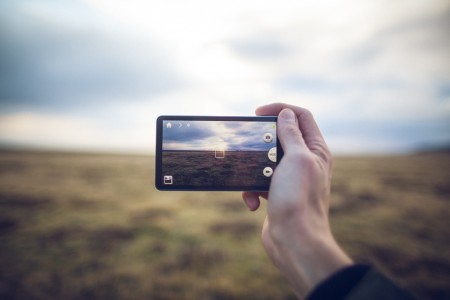
For a phone-less camera, it’s super connected.
Because it comes with GPS, Wifi & 3G connectivity, it makes sharing your photos while you’re on the road really easy. In fact, I’d call it a potential lifesaver. You can set it up to auto-upload to Dropbox or Google+, so if you lose your camera, you’ll still have your photos. Or you can use it to Skype the Icelandic police when you lock yourself out of your car at dusk, in a sand storm, in the middle of nowhere. True story.
Optical zoom is great. Photo quality is so-so.
At 16 megapixels, it outputs photos larger than what phones currently can, yes, but are they better? Not entirely. The lens and 21x optical zoom give you more versatility than a smartphone, but if you examine the photos below closely, you’ll see some JPEG compression and color fringing. For $500 bucks, it’s certainly not as good as you’d find in another equally priced point and shoot camera.
Photo editing software on Android is scarce.
The camera comes pre-installed with the Photo Wizard editing app, which is sufficient for some, but you’ll probably want to install PicsPlay Pro if you want more control & full resolution exports. It’s the best Android photo editor I can find.
Awkward to hold when you type.
You’ll be using the touchscreen keyboard just as much as you would when operating your standard Android phone, which means you’ll want to hold the screen like a phone, which also means you’ll be holding a camera in a way it wasn’t meant to be held – lens to palm. Not ideal. Thankfully this one has an automatic lens cover.
A note for heavy Instagram users…
The zoom lens opens and extends every time you activate the camera, so if you’re indecisive like me when choosing a photo to post to Instagram, you’ll find the camera opens and closes repeatedly. One of those nobody saw it coming kind of things.
Overall
There are some usability & quality issues between hardware and software that need figuring out, but the Galaxy Camera is pretty killer considering all you can do with it (hat tip to Android). It’s more camera than smartphone, but when you consider portability, smartphones may still win in the end once smaller, mobile sensors catch up in quality.
iPhone 5 Camera x Iceland
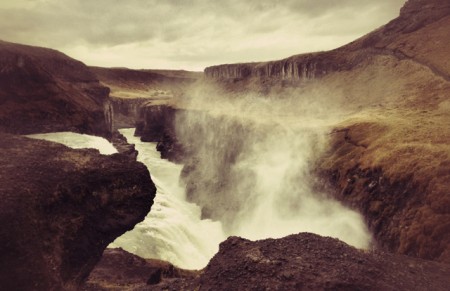
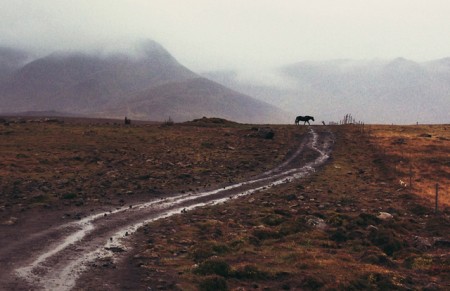
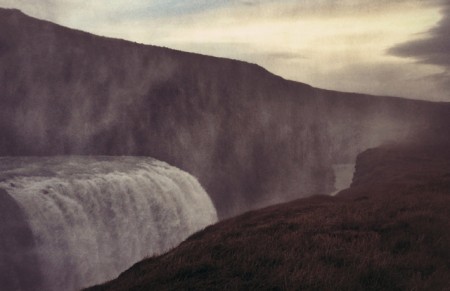
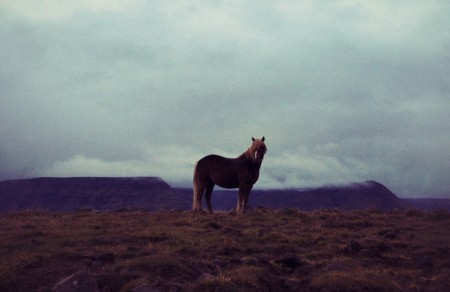
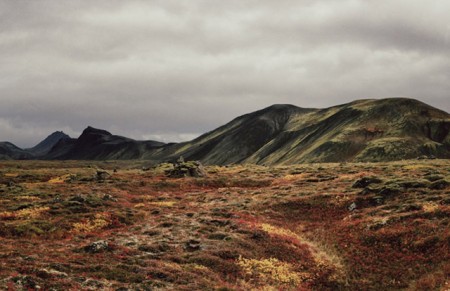
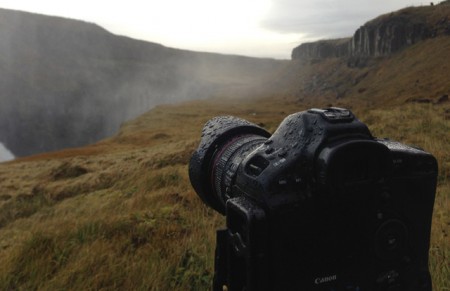
Incredible shots from Austin Mann taken with an iPhone 5. via Macspoilers:
Travel photographer Austin Mann recently purchased the iPhone 5 and took it for a field test in Iceland. Just as we thought, the camera is pretty awesome. Austin used the iPhone app Snapseed by Nik Software to edit them while others are the raw image. He puts the camera through low light tests that had minimal noise and produced clean jpegs. He also used the panorama mode to capture some of the beautiful mountains and rivers in amazing detail.
You know it’s a great time to be a photographer when a “phone” can create beautiful images like these. Of course, as they always say, it’s the photographer and not the camera… But I have a hard time believing Mann could have made these images with anything older than a 4S (and perhaps not even that phone). And my AT&T contract isn’t up until July! Oh well, will try and score a 5D in the meantime.
More photos, including panoramas, at Macspoilers
Impossible Project Instant Lab
The Impossible Project launched the Impossible Instant Lab via Kickstarter, which is designed to transform any digital image via your iPhone into an instant photo that is exposed using only the light from the display, then processed and developed by chemicals. A photo that no longer needs an electronic device to be seen.
What are everyone’s thoughts on this? Is a photo just a photo, or…?
